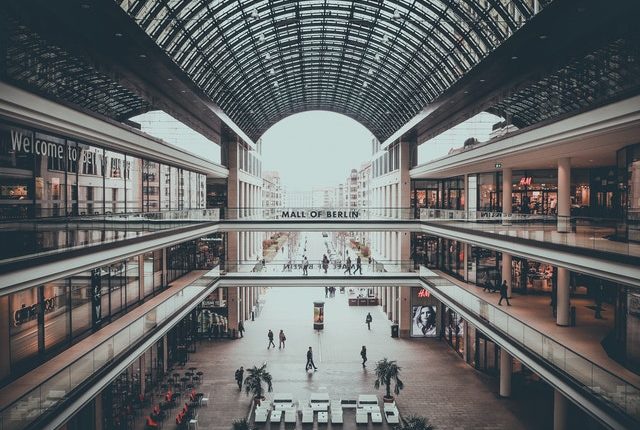| Just the Peaks
This newsletter, at a glance
|
Silicon Valley retail is beyond booming—it’s roaring
Everest tracks the top 5 trends to come out of South Bay, CA
Thanks in huge part to President Donald Trump, America’s economy continues to thrive. Reaching a 50-year low in December of 2019, the current unemployment rate clocks in at 3.6%, with only 5.89 million citizens out of work. Put into perspective, the stat is astounding, as the total U.S. labor force is approximated at a staggering 160 million.
In times of such economic prosperity, what do people do? They go shopping.
More money, more projects
Commercial investors and builders have been abuzz for years now, enjoying opportunities for retail development in nearly every corner of the country. Not to mention, brick-and-mortar retailers are doing great despite ecommerce competition.
But scanning today’s CRE headlines, there’s one location taking retail trends to the next level—and that’s none other than Silicon Valley, California. Nestled south of the San Francisco Bay Area, the tech mecca is experiencing what industry experts call a ‘retail renaissance.’ With 1M square feet of retail space under construction in 19Q3 alone, the area’s retail availability rate hovers just under 7%.
“As Silicon Valley’s economy has grown to new levels, its retail market is at the forefront of where experts see the sector heading in the new decade,” says Dean Boerner of Bisnow. “The average annual asking rent in the region grew 3.26% year-over-year to $32.25 per SF in Q3 last year.”
Race to the register
Consumer stats, 2020
- This year, U.S. retail sales are projected to top $3.9 trillion, rising somewhere between 3.5% and 4.1%*
- In 2019, retail sales increased 3.7% to $3.79 trillion, representing both brick-and-mortar and ecommerce sales
- In 2020, e-commerce is expected to see 12% to 15% growth, with total sales between $870 and $893.9 billion
- This leaves a whopping $3 trillion piece of the pie to be realized among brick-and-mortar retailers
**For more consumer stats, visit PYMNTS.com and NRF.com
*NRF clarifies that the 2020 forecast was calculated prior to Coronavirus threat
Seeking Silicon inspiration
Trump’s economic expansion has been a godsend to eager investors. As you embark on new, exciting opportunities in coming years, turn your sights toward the trendsetters reenergizing California’s retail sector. With steady rise in household incomes, consumer confidence is growing—and their tastes are changing.
Here are the…
Top 5 Takeaways from Silicon Valley’s Retail Renaissance
- Luxury is in
Clearly, great wealth brings greater predilections. Santa Clara County recently saw 15 new high-end stores added to their already impressive collection of 20 luxury retailers. While Silicon Valley households enjoy some of the highest median incomes in the country, the trend is relevant everywhere.
Millennial consumers continue to drive the luxury retail market. With money to spend, buyers are craving high-end goods, hotels, jewelry, cars and more.
- Experiences are everything
‘Experiential retail’ is really anything immersive and interactive. Whether we’re talking a big box store, pop-up-shop, quickie kiosk or movie theatre, purposeful design is key. Consumers want to interact with brands in a meaningful way. Looking to Silicon Valley, what’s the latest in experience-driven shopping?
According to Boerner, examples include the “Showplace ICON Theatre that opened last year, a virtual reality concept called THE VOID, and a 50K SF location of fast-expanding Italian marketplace Eataly, which will open next year.”
- Don’t upsize—right-size
When the economy blossoms, instinct tells us to go bigger. But in reality, ‘right-sizing’ has become super trendy and profitable. Moving a store into a smaller space, for instance, is not necessarily a sign of defeat.
Strategists in California recently relocated a Petco store, downsizing from 30K to 15K square feet. Instead of closing their doors altogether, brands are discovering new ways to cash in on Trump’s economy, without getting in over their heads.
- Boutique is better
“Because of its relatively young, wealthy and well-educated demographics, Silicon Valley is ripe for the wide variety of boutique fitness offerings proliferating in urban markets,” writes Boerner. Beyond the bare necessities, consumers are looking to take care of their bodies and minds.
From big cities to quaint suburban towns, boutique tenants are moving in. Instead of the typical 24-hour gym, more specialized yoga, Pilates and Gyrotonic studios are flourishing. Think outside the box when it comes to the kinds of businesses that may occupy your space. Small artisanal retail is having a huge moment.
- Cuisine goes clean
Natural grocery stores like Whole Foods, Sprouts, Trader Joes and Aldi continue to draw consumer interest. As perspectives on health and wellness have matured in recent years, retailers are cashing in big time. Silicon Valley developers know best.
“An emphasis on health has led to the opening of natural food stores,” Boerner says. “Hunger Storm and Sares Regis Group of Northern California quickly signed Whole Foods to a 54K SF space that is nearly complete.”
Everest says: buy when the time is right




